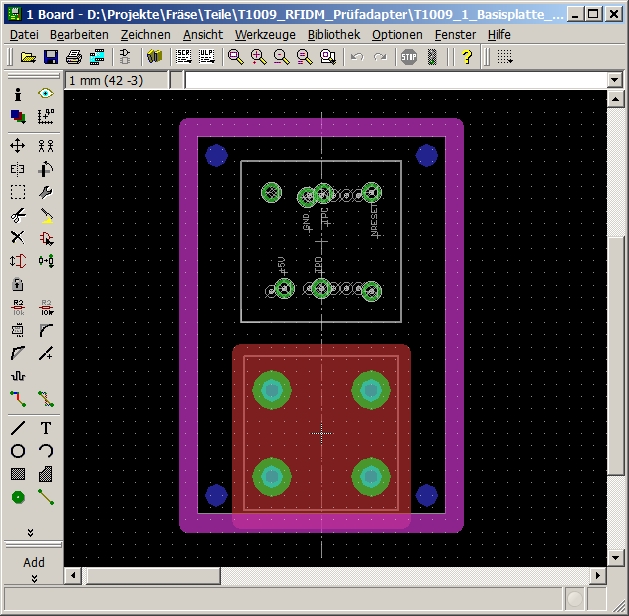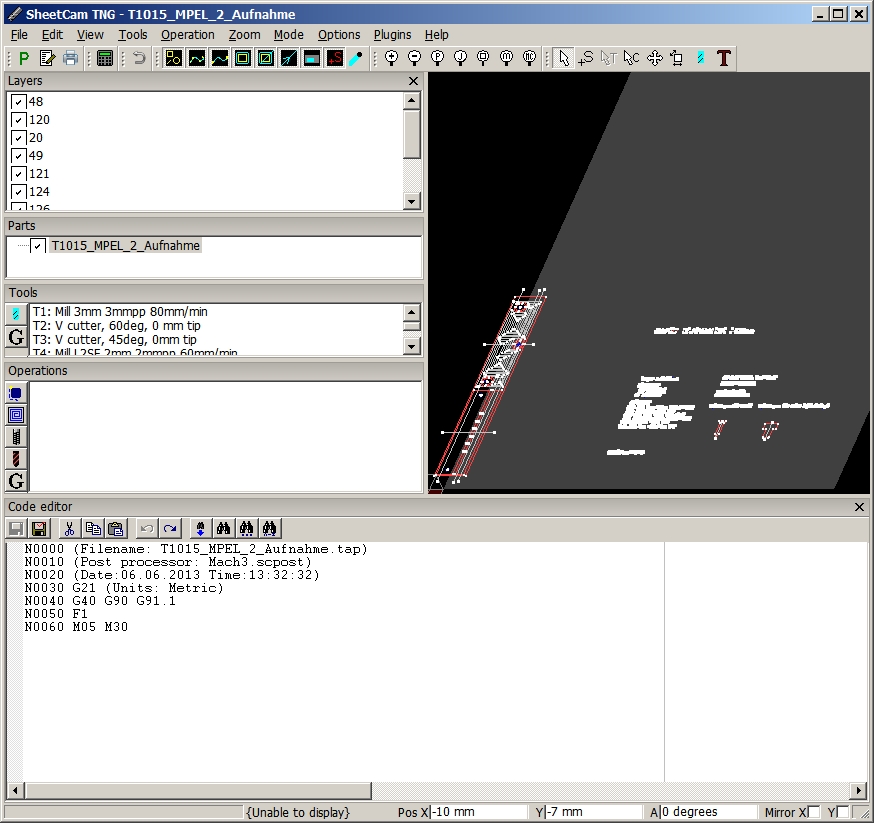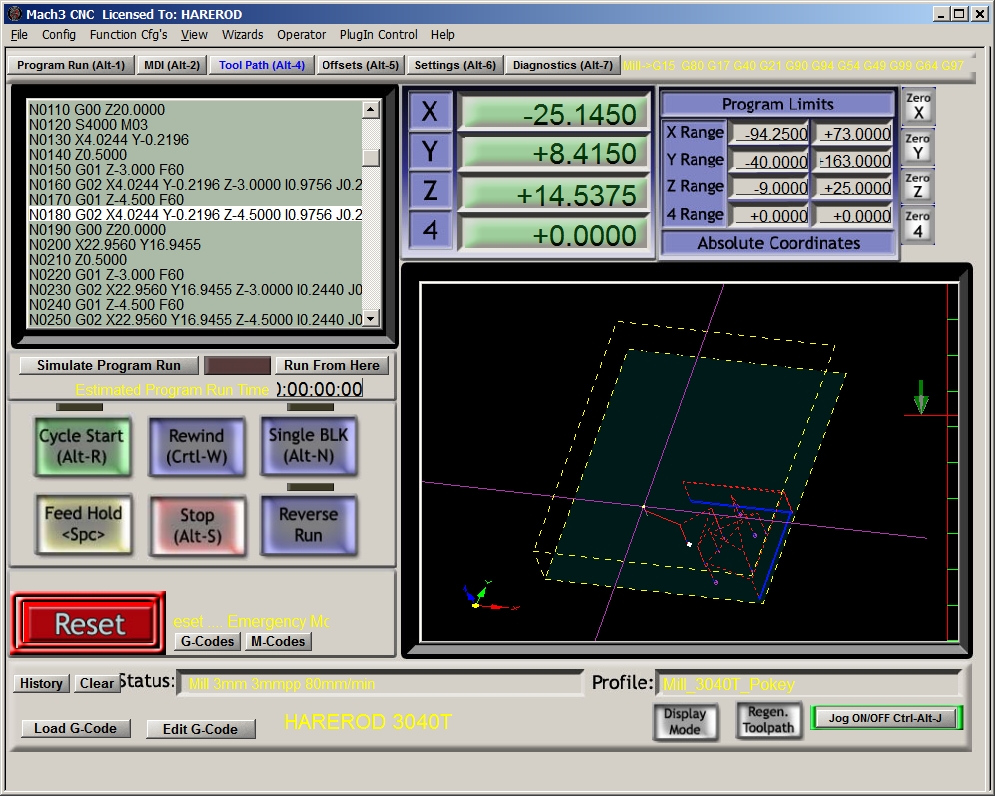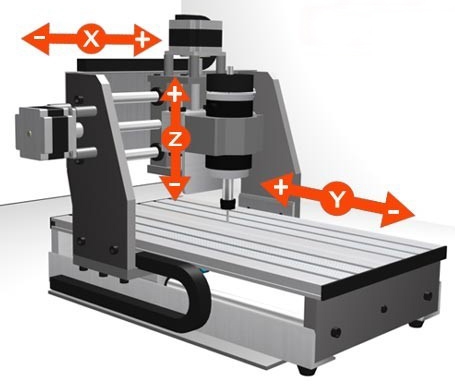
HAREROD
Marcus Hasenstab - Dipl.-Ing. (FH) Electrical Engineering / Automation
Electronics - Firmware - Documentation
Technology
This page introduces the 'toolbox' HAREROD applies to work towards your success.Presented are prefered hard- and software products.
STM3232bit ARM Family of Microcontrollers - Hardware-/Firmware Development
AVR8bit-Family of Microcontrollers - Hardware-/Firmware Development
PIC8bit-Family of Microcontrollers - Hardware-/Firmware Development
ESP322.4 GHz Wi-Fi-and-Bluetooth combo chip
EAGLECADSOFT EAGLE PCB-Design-Software
TARGETIB Friedrich - Target 3001!
Mill RouterMicro CNC Mill Router
STM32 - 32bit ARM Family of Microcontrollers - Hardware-/Firmware Development

- wide spread platform for complex microcontroller applications
- on their own account ST Microelectronics claimed a 45% market share of Cortex-M microcontrollers by 2010
- for performance requirements between 8bit-controllers and embedded PCs
- is used at HAREROD for most current projects, because of
- high computing power reserves (up to 400MHz ARM Cortex-M7 with FPU and DSP)
- ample internal memory (up to 2MiB flash and 340KiB SRAM)
- cost reducing internal peripherals
- is used at HAREROD for most smaller current projects, because
- F0/Cortex M0 family provides low-cost, small MCUs (up to 48MHz ARM Cortex-M0)
- this allows one code base to be used for all classes of projects
- preferred development environment for RTOS-applications: CubeMX + FreeRTOS + lwIP
- well established codebase directly from the chip manufacturer
- stable codebase
- customer may take over the project at any time without additional cost
- any number of concurrent developers on the project
- preferred development environment is GCC and CMSIS
- Eclipse based development environment free available for commercial projects - e.g. CubeMX, Atollic TrueStudio and CooCox
- high guaranteed future use through lack of hardware protection ('dongle') and software leases
- customer may take over the project at any time without additional cost
- any number of concurrent developers on the project
- existing and tested own firmware modules, GCC and CMSIS based (selection)
- firmware framework
- often no operating system
- enables lean applications
- project-, data- and future-security through absolute control of the framework
- often no operating system
- watchdog and stack/heap guard for high reliability
- systemtimer
- system time base
- application timer
- RTC - Real Time Clock
- battery buffered real time clock - e.g. for data logger
- over 5 year operation from a CR2032 button cell
- backup-RAM e.g. for operating state storage
- interrupt handler
- DMA - Direct Memory Access
- main loop / scheduler
- LCD-graphics library
- framebuffer with overlay
- basic functions - pixel, line, arc
- arbitrary fonts - e.g. Windows or custom designs
- touch interface - with buttons, sliders, keyboard
- beeper-sound
- input of melodies via staves
- USART - Universal Synchronous Asynchronous Transceiver
- supports different serial interfaces e.g., RS232, RS485 (full- and half-duplex)
- Command Interpreter for remote control of the module
- typically 4..8 USARTs on-chip, possibility of additional external channels
- field firmware update
- USB - Universal Serial Bus
- application specific input devices
- HumanInterfaceDevice - keyboard, joystick, mouse with Windows standard driver
- emulation of a serial interface
- CommunicationDeviceClass - VirtualComPort with Windows drivers from ST
- field firmware update - DeviceFirmwareUpdate
- application specific input devices
- timer
- PWM - e.g. for motor control
- impulse generator - the STM32F4 features Timer with 168MHz clock rate
- beeper sound
- SPI - Serial Peripheral Interface
- sensor control
- IO-extension
- SDcard Interface via SPI or SDIO
- I2C - Inter Integrated Circuit
- EEPROM for parameter storage / Ethernet MAC
- sensor control
- ADC - Analog to Digital Converter
- module self diagnosis, including analog watchdog
- signal measurement
- touchpanel-interface (resistive, without external logic)
- DAC - Digital to Analog Converter
- programmable signal generator with 1MSps
- FMC - Flexible Memory Controller
- LCD - e.g. compatible to Toshiba T6963C or Epson SED1278
- SDRAM for memory demanding applications
- Ethernet
- several PHY and SWITCH variations
- mini-webserver as remote user interface
- web pages in internal flash memory or, e.g., on SDcard
- data exchange via Common Gateway Interface (CGI)
- simple data display using Server Side Includes (SSI)
- generation of dynamic content, e.g. show LCD-data as bitmap
- HTML-touchscreen-emulation
- identical user interface for browser and touch display
- firmware framework
- optimized schematics- and layout development due to familiarity with special features
- part selection
- pinout
- external circuitry
AVR - 8bit-Family of Microcontrollers - Hardware-/Firmware Development

- well established work horse for microcontroller applications
- long standing experience from uncountable projects
- beginning with the AT90S1200 up to ATmega164
- is used in current projects, if
- size is an issue (RFID-base station, melody generator)
- simplicity is required (hovering Christmas ball)
- very low cost is required
- even lower standby power than STM32L, e.g. < 1µA for newer ATtiny
- preferred development tools
- Atmel Studio with GCC
- short development times and good portability through high level C language
- Atmel Studio with AVR-Assembler
- selective usage of machine language yields crisp timing without external logic parts (MAHPONG)
- Atmel Studio with GCC
- optimized schematics- and layout development due to familiarity with special features
- part selection
- pinout
- external circuitry
PIC - 8bit-Family of Microcontrollers - Hardware-/Firmware Development

- well established work horse for microcontroller applications
- long standing experience from uncountable projects
- beginning with the PIC16C54 up to current PIC10/PIC12/PIC16F-types
- is used in current projects, if
- size is an issue
- very low power is available (LCD timer module)
- extra low cost is required (LCD timer module)
- preferred development tools
- Microchip MPLAB with MPASM
- usage of machine language yields very compact code and crisp timing without external logic parts (LCD timer module)
- Microchip MPLAB with MPASM
- optimized schematics- and layout development due to familiarity with special features
- part selection
- pinout
- external circuitry
ESP32 - 2.4 GHz Wi-Fi-and-Bluetooth combo chip

- Prolific System-on-Chip, integrating wireless functionality with a high performance microcontroller system
- IoT (Internet of Things)
- wireless webserver
- extensive integrated periphgeral set (extract)
- Wi-Fi Key Features
- 802.11 b/g/n
- 802.11 n (2.4 GHz), up to 150 Mbps
- BT Key Features
- Compliant with Bluetooth v4.2 BR/EDR and BLE specifications
- Class-1, class-2 and class-3 transmitter without external power amplifier
- CPU and Memory
- Xtensa single-/dual-core 32-bit LX6 microprocessor(s)
- Peripheral Interfaces
- Two timer groups, including 2 x 64-bit timers and 1 x main watchdog in each group
- One RTC timer
- RTC watchdog
- 34x programmable GPIOs
- 12-bit SAR ADC with up to 18 channels
- 2x 8-bit DAC
- 10x touch sensors
- 4x SPI
- 2x I2S
- 2x I2C
- 3x UART
- 1x host (SD/eMMC/SDIO)
- 1x slave (SDIO/SPI)/li>
- Ethernet MAC interface with dedicated DMA and IEEE 1588 support
- CAN 2.0
- IR (TX/RX)
- Motor PWM
- LED PWM up to 16 channels
- Hall sensor
- Wi-Fi Key Features
- Experience by reference projects with proven EN 60601 (medical) and ETSI EN 301 489 (radio) conformity
CADSOFT EAGLE PCB-Design-Software

- worldwide established design software for circuit design and PCB layout
- long standing experience from uncountable projects
- using version EAGLE 7 Professional, previous versions 4-6 Professional available, AutoDesk leased versions 8++ on customer's request
- free viewer application available to customers
- experiences with other packages (Mentor, Altium) are used for concepts of the workflow
- HAREROD parts database
- the parts database is maintained integrating constant feedback from our manufacturers
- proven design rules and packages guarantee high production yields
- unique part mapping by manufacturer codes
- production data preparation
- HAREROD production partners get explicit records, consisting of
- EAGLE BRD
- the reference for the PCB is the BRD-file, not secondary data like Gerber etc.
- the manufacturers are responsible for generation of CAM data fitting their processes
- bill of materials
- a basic bill of materials (BOM) is automatically generated from the parts database
- the BOM is fine tuned for the chosen manufacturer (prototypes/pilot runs/large-scale)
- module/component specifications/datasheet
- each module/component has its own specifications/datasheet
- definition of production processes
- EAGLE SCH
- the separation of PCB data and schematics protects customer know-how
- following corresponding agreements, schematics may be issued to the manufacturer to facilitate additional device tests
- EAGLE BRD
- HAREROD production partners get explicit records, consisting of
- the quality of HAREROD production data is being repeatedly complimented by manufacturing partners, resulting in customers to order reviewing and processing of data provided by third party developers
IB Friedrich - Target 3001!

- wide established design software for circuit design and PCB layout
- long standing experience from many projects
- free viewer application available to customers
- front panel design
- Target3001! contains a module for front panel design
- generation of mill- and print-data
Micro CNC Mill Router




- a micro mill router can not replace industrial parts manufacturing
- a micro mill router enables cost optimized rapid prototyping and pilot runs without third-party manufacturing
- workflow
- design of DXF-drawings (e.g., EAGLE)
- translation of DXF into G-code (incl. tool informations)
- CNC processing
- router workspace
- ca. 500mm x 350mm x 70mm
- tools (selection)
- mill 0.3mm .. 3mm
- drill 0.5 .. 3mm
- engraver 45° / 60°
- preferred material
- POM - Polyoxymethylen
- physiologically uncritical
- high rigidity and stiffness
- thermoplast -40..130°C
- density 1.4g/ccm
- POM - Polyoxymethylen
- workflow
- lab samples
- ports in sample casings
- test equipment manufacturing
- test adapters / assembling calipers / programming adapters
- development and manufacturing parallel to the electronics development
- test adapters / assembling calipers / programming adapters
- reworking
- nearly no new design is bug free - the micro CNC mill allows manual or automated rework of PCB's, e.g.
- connector does not fit
- adjust drill diameter, e.g., with 0.5mm drill/mill
- layout bugs
- precision stripping of stop solder mask, to add patches
- precision stripping of PCB material to reach inner layers
- precison cutting of copper traces, e.g., with 0.5mm mill
- connector does not fit
- nearly no new design is bug free - the micro CNC mill allows manual or automated rework of PCB's, e.g.

